Health, Home & Family
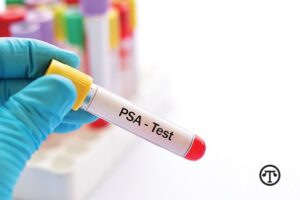 Children and teens are catching and spreading COVID-19 at an increasingly high rate. Even if your child or teen has not yet contracted COVID-19, they are at risk, especially with the low number of vaccinated residents in Oklahoma.
Children and teens are catching and spreading COVID-19 at an increasingly high rate. Even if your child or teen has not yet contracted COVID-19, they are at risk, especially with the low number of vaccinated residents in Oklahoma.
“In the early months of the COVID-19 pandemic, older people were most likely to get the virus. Now it is affecting everyone, and children and teens are also at risk of contracting the virus and experiencing long-lasting impacts,” said Dr. Dale Bratzler, University Chief COVID Officer and Professor in the OU Hudson College of Public Health. “We need to do everything we can to keep all our kids safe, and the best way to do that is to get more people vaccinated.”
Parents and other adults in a child or teen’s life can take steps to protect young people and themselves.
Get Your Child Vaccinated When Eligible
The best way to protect your children from COVID-19 and all the potential complications is to get them vaccinated as soon as they are eligible. The COVID-19 vaccine is free, widely available, and highly effective in preventing hospitalization and death from COVID-19. Like most vaccines, some minor side effects may occur, such as a sore arm or slight fatigue, but the symptoms and long-term impact of contracting COVID-19 are much more serious. Ultimately, it is much safer for children and teens to get a COVID-19 vaccine than getting the disease itself.
Practice Prevention
If your children are not eligible to be vaccinated, you can still keep them safe from COVID-19 by practicing recommended prevention methods such as physical distancing when possible and continuing to wear a mask, especially in crowds or while indoors. Even people who have been vaccinated should wear a mask in crowds and public indoor places. Most children can safely and effectively wear face masks, so it’s important to remind them that it keeps them safe and to set an example by wearing a mask, too.
Encourage Adults In Your Child’s Life To Get Vaccinated
Ensuring that those who spend time around your child are vaccinated helps keep an unvaccinated child from getting sick or spreading COVID-19 to other vulnerable people. Talk to the adults in your child’s life—grandparents, friends’ parents, and teachers—about getting vaccinated to protect themselves and your child.
Children and teens are just as susceptible to COVID-19 as adults, and they can spread the virus to others who are at even greater risk. A growing number of children and teens have been hospitalized with COVID-19. Getting all eligible children and teens vaccinated and following simple prevention measures will protect them, their families, and friends, and get everyone one step closer to getting this pandemic under control.
Learn More
For more information and to find a vaccine, visit www.vaccines.gov.
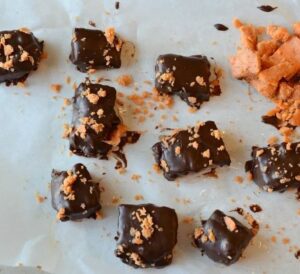 Homemade Butterfingers are the most addictive candy bars, maybe ever. These bite-sized chocolate bars are great for a Halloween bash, but they are also great for your everyday chocolate cravings!
Homemade Butterfingers are the most addictive candy bars, maybe ever. These bite-sized chocolate bars are great for a Halloween bash, but they are also great for your everyday chocolate cravings!
Ingredients
- 3 cups candy corn
- 1 1/2 cups creamy peanut butter
- 2 cups good quality chocolate – milk, dark, or even white!
Instructions
- Line a 9×9 inch baking dish with parchment paper (be sure to cover up the sides of the dish too), and set aside.
- In a large glass bowl melt the candy corn in the microwave. Melt it in 30 second spurts and stir it well in between each time. When it is completely melted add the peanut butter and stir to combine. Pour it into the prepared pan, spreading it out, and smoothing the top. Let the mixture cool completely, about an hour.
- When cool, remove the candy from the pan by pulling on the parchment paper. Place the parchment paper and candy on a cutting board. Using a sharp knife, cut the candy into bite-sized pieces.
- Melt the chocolate and then dip each piece of candy completely into the chocolate. Remove and place on a piece of waxed paper until the chocolate is set, about 20 minutes.
- Serve or store in an air-tight container.
(NAPSI)—There’s good news, bad news and better news about combating cancer in America these days.
The good news is there’s been an overall decline in U.S. cancer deaths since 1991.
The bad news is not all patients have benefited equally from advances in prevention, early detection and precision medicine. One study found that around 8.1 percent of cancer patients participate in a clinical trial. Of those, FDA data show that only 4 percent of clinical trial participants are Black and 5 percent are Hispanic.
What’s more, minority groups overall in the U.S. have both the highest death rate and shortest survival rate for most cancers. These inequities in cancer care have been ongoing for decades, due in part to socio-economic barriers, insufficient information about trials and their benefits, as well as other challenges.
The better news is a major funder of cancer research is working to tackle cancer disparities. Stand Up To Cancer® (SU2C), which raises money to accelerate the pace of research to get new therapies to patients quickly and save lives now, began formalizing its Health Equity Initiative in 2017. The initiative aims to increase minority representation in cancer clinical trials and ensure new cancer treatments are effective for all. Continue reading
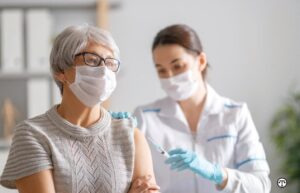 (NAPSI)—With the three new COVID-19 vaccines widely available, millions of Americans have been encouraged to get vaccinated. The Centers for Disease Control and Prevention (CDC) reports that, as of July 2021, 47% of the total U.S. population is now fully vaccinated and over 182 million Americans have received at least one dose. This effort has helped reduce the number of COVID-19 cases and deaths.
(NAPSI)—With the three new COVID-19 vaccines widely available, millions of Americans have been encouraged to get vaccinated. The Centers for Disease Control and Prevention (CDC) reports that, as of July 2021, 47% of the total U.S. population is now fully vaccinated and over 182 million Americans have received at least one dose. This effort has helped reduce the number of COVID-19 cases and deaths.
But people with diabetes may have questions about COVID-19 vaccines, including whether they should get vaccinated and whether the vaccines are safe. If you have diabetes, here is what you need to know:
•People with diabetes should get vaccinated. About 40% of people who died from COVID-19 from February to April 2020—before COVID-19 vaccines were publicly available—had diabetes. People with type 1 or type 2 diabetes often have complications including heart disease and obesity, which means people with either type of diabetes are at a much higher risk of developing severe illness if they were to get COVID-19. One of the best ways to avoid becoming seriously sick with COVID-19 is to get vaccinated.
•The three COVID-19 vaccines are safe for people with diabetes. The available vaccines are not made from SARS-COV-2, the coronavirus that causes COVID-19, so there is no risk of getting sick with COVID-19 just from getting the vaccine. People with diabetes were included in COVID-19 vaccine clinical trials across the United States and other countries, and none of the trials reported significant safety issues among study participants.
•Continue monitoring your blood glucose regularly after being vaccinated. In some individuals, the vaccine may cause possible side effects that can be similar to feeling sick, such as chills, fever, and nausea. People with diabetes should speak with their health care professional about this and how to monitor their blood glucose levels following COVID-19 vaccination. Continue reading
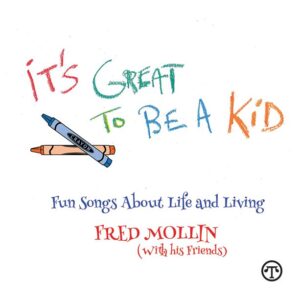 (NAPSI)—In these uncertain times, kids need music more than ever. Anyone who has ever seen toddlers naturally sway and bob to music, knows that children feel music—and that music and kids go together like macaroni and cheese. Studies also show that music can help the very young deal with stress and turn around their emotions like nothing else.
(NAPSI)—In these uncertain times, kids need music more than ever. Anyone who has ever seen toddlers naturally sway and bob to music, knows that children feel music—and that music and kids go together like macaroni and cheese. Studies also show that music can help the very young deal with stress and turn around their emotions like nothing else.
Tunes For Toddlers
To that end, Walt Disney Records’ most successful lullaby album artist and producer, Grammy nominee Fred Mollin, created “It’s Great To Be a Kid,” a new album of heartwarming, fun original songs for kids ages 1 through 6. These songs take children on a musical expedition highlighting the beautiful things in life, reminding them how much joy there is to look forward to in their young lives at a time when they need it most.
The songs evoke the simple pleasures of being young, driving in a car, walking and seeing the beauty of nature, playing with friends, dancing to an upbeat song, the joy of food and even the fun of helping tidy up the house. Three interactive Bonus Tracks are versions that leave key moments blank during the songs, for children to join in.
Learn More
For further information, visit www.melodyplacemusic.com and www.fredmollin.com.
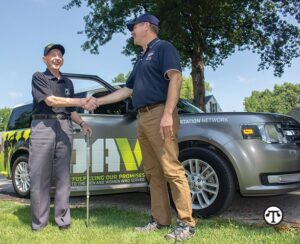 (NAPSI)—There are certain aspects of the COVID-19 pandemic that many Americans may not have thought about. For example, one area that saw a sharp decline was volunteerism—placing heavy burdens on nonprofit organizations that rely on the compassion of their volunteer forces.
(NAPSI)—There are certain aspects of the COVID-19 pandemic that many Americans may not have thought about. For example, one area that saw a sharp decline was volunteerism—placing heavy burdens on nonprofit organizations that rely on the compassion of their volunteer forces.
According to a recent research survey by Fidelity Charitable, a nonprofit organization created by Fidelity Investments, two-thirds of all U.S. volunteers had either decreased volunteer hours or stopped volunteering altogether because of the pandemic.
Volunteer to Help Veterans
One nonprofit feeling the effects is DAV (Disabled American Veterans) and its Transportation Network, which has helped get veterans to and from medical appointments since 1987, when the government-run system was shut down. The nationwide DAV Transportation Network provides no-cost rides to veterans who need help getting to their Department of Veterans Affairs (VA) medical centers and clinics. Prior to 2020, volunteer drivers spent more than one million hours and logged over 20 million miles, providing more than 600,000 rides for veterans each year.
“We’ve seen a major decline over the past year in volunteer support across all of our programs,” said John Kleindienst, Director of Voluntary Services at DAV. “For our aging veteran population, getting to and from critical care appointments is a growing concern and without volunteers, many veterans have no way to access their health care or get other much needed support.” Continue reading
 (NAPSI)—While most American adults have already received at least one dose of a COVID-19 vaccine, a lot of people still have questions. Everyone deserves to have access to factual information to make a decision about getting vaccinated. But many people don’t know where to go to get their questions answered.
(NAPSI)—While most American adults have already received at least one dose of a COVID-19 vaccine, a lot of people still have questions. Everyone deserves to have access to factual information to make a decision about getting vaccinated. But many people don’t know where to go to get their questions answered.
For most people who want more information, talking to their personal doctor is the best place to start. Your doctor or health team will know you and your medical situation better than anyone. They can help you make an informed decision that’s right for you.
When talking with your doctor, there are a few key questions you may want to consider:
Vaccine Questions:
1.Why did your doctor choose to get vaccinated? Over 90% of doctors have decided to get vaccinated against COVID-19. You may want to hear more about why they chose to get vaccinated as a healthcare provider. Continue reading
 (NAPSI)—Over 1.8 million Americans are diagnosed with cancer every year according to the American Cancer Society. If you or someone you care about is diagnosed with cancer you may be relieved to know there are techniques available that can improve your likelihood of response and survival by using your cancer cells to select the most effective drugs before you receive them.
(NAPSI)—Over 1.8 million Americans are diagnosed with cancer every year according to the American Cancer Society. If you or someone you care about is diagnosed with cancer you may be relieved to know there are techniques available that can improve your likelihood of response and survival by using your cancer cells to select the most effective drugs before you receive them.
What Can Help
The process is called functional profiling, which analyzes living cancer cells from a patient to find out the drugs, combinations and sequences that are the most effective and least toxic for each individual. It’s particularly helpful in treating cancers that have been considered “untreatable,” such as pancreatic cancers, advanced lung and recurrent breast cancers.
Why It Works
Cancers arise from cells that have learned certain tricks to enhance their survival. In so doing they outlive their normal counterparts. These transformed cells interact directly with their micro-environment. Cancer cells “talk” to each other and to all the surrounding immune cells, blood vessels and structural elements using chemical signals such as growth fac- tors and metabolic byproducts. Blood vessels, immune cells and connective tissues all participate and promote the cancer process. Continue reading
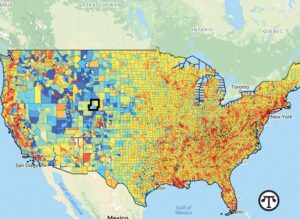 (NAPSI)—Nationwide, in both major cities and small towns, neighborhoods with more Black, Hispanic and Asian residents experience hotter temperatures during summer heatwaves than nearby white residents, regardless of a neighborhood’s income.
(NAPSI)—Nationwide, in both major cities and small towns, neighborhoods with more Black, Hispanic and Asian residents experience hotter temperatures during summer heatwaves than nearby white residents, regardless of a neighborhood’s income.
These racial disparities exist because non-white neighborhoods tend to be more densely built up with buildings and pavement that trap heat, and have fewer trees to cool the landscape, according to the nationwide study in the AGU journal Earth’s Future, which publishes interdisciplinary research on the past, present and future of the planet and its inhabitants.
The trend held up even when wealth was taken out of the picture. When residents had a similar income, non-white neighborhoods still faced significantly higher temperatures than white ones in 71% of the counties.
“Urban climate is different from temperatures outside the city,” explained the study’s co-author Susanne Benz, an environmental scientist who conducted this research at the University of California, San Diego and is now at Dalhousie University. “Inside the city, temperatures are affected by the buildings surrounding you and by the surface of the streets.” Dark pavement absorbs sunlight and releases the heat at night, while trees and other vegetation cool an area through transpiration, when they release water vapor through pores in the leaves. Continue reading
 To get a tropical look in a warm temperate garden, one most interesting is the little-known genus Curcuma which includes Curcuma longa the culinary spice turmeric. Curcuma, or hidden cone gingers, is a genus of mostly tropical plants known for their dramatic bold foliage, flamboyant floral show. Curcuma can range in height from just under 2′ to over 7′ tall. The slightly hidden flowers resemble psychedelic pinecones…a nice trip back to the 1960s.
To get a tropical look in a warm temperate garden, one most interesting is the little-known genus Curcuma which includes Curcuma longa the culinary spice turmeric. Curcuma, or hidden cone gingers, is a genus of mostly tropical plants known for their dramatic bold foliage, flamboyant floral show. Curcuma can range in height from just under 2′ to over 7′ tall. The slightly hidden flowers resemble psychedelic pinecones…a nice trip back to the 1960s.

